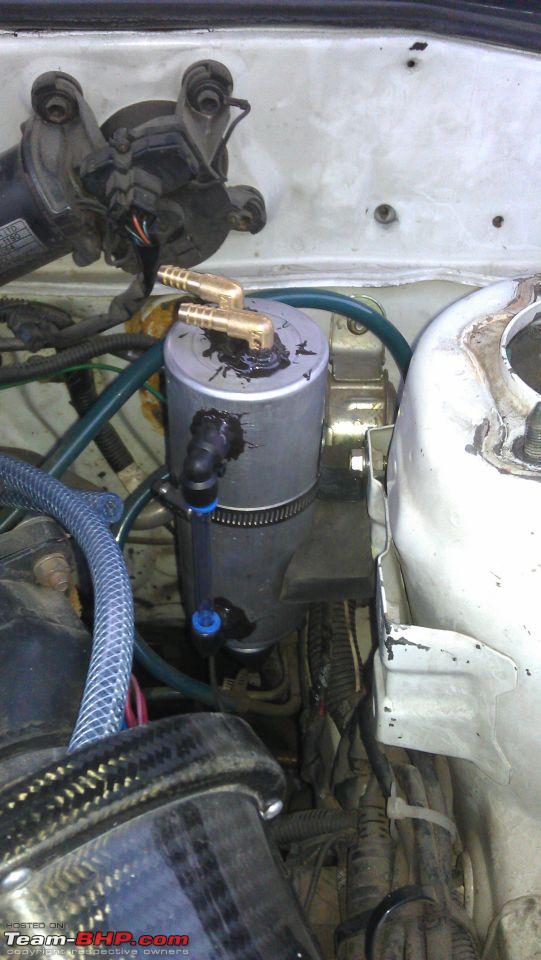

I installed a catch can using the first method you listed, by adding it in line with the existing PCV valveintake plenum.įor your application, I'd say that would be the best method, as a sealed system will give you the best idea how much oil you're losing through the PCV. I have an '06 G35 6sp Sedan (145k miles). I think I used 24" of high pressure hose total, and my canister happens to sit nicely behind the bracket that holds the PS reservoir. What is generally the best setup for this? Are there other possibilities?ĮDIT: Pictures of my setup. Obviously, no vacuum and possibly changes the metering a bit. This has reportedly seen some success in greatly reducing oil consumption, but having no vacuum on the PCV and only getting fresh-ish, unmetered air on the inlet seems like a potentially Bad Idea™.īreather directly on the PCV port (no valve) and cap the vacuum port. The vacuum inlet on the manifold and fresh air outlet on the intake duct would be capped. Pulling the PCV valve, plumbing it to a vented can intake, and plumbing the other side of the can to the fresh air inlet. I expect this probably won't have much effect on consumption, but I'll be able to say, "yup, that's where my oil is going." The only potential problem I see with this is possibly a slight reduction in the vacuum on PCV (due to it having to travel through the can and additional plumbing), adding more stress to seals. This theoretically draws most of the nasty stuff out into the can and returns clean-ish vapours to the manifold. Sealed can between the PCV valve and the vacuum inlet on the manifold. I've seen a few ways this or other PCV modifications are done: I've tried Mobil1 5w30, Castrol Edge 0w30 and changing the PCV valve. Never smokes blue or otherwise, runs smooth, pulls strong.

I'd like to install a catch can to help diagnose and possibly reduce some oil consumption ( Previous question with more details on oil consumption). I have an '04 Infiniti G35 6MT coupe, 97k miles, completely stock.


 0 kommentar(er)
0 kommentar(er)
